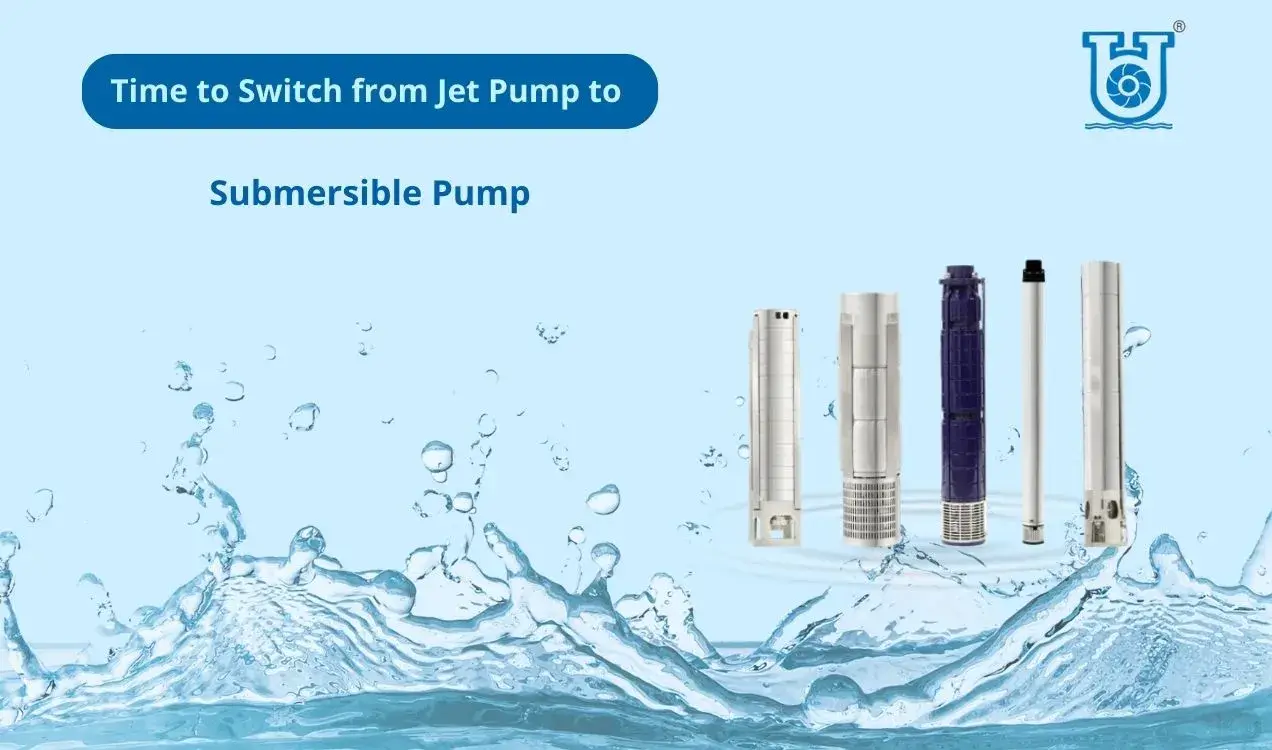Considering the transition from a jet pump to a submersible pump entails balancing many aspects to find the ideal moment for the change. Submersible pumps provide greater efficiency, dependability, and space-saving advantages compared to jet pumps, but with a somewhat higher initial cost. Evaluating variables such as energy efficiency, maintenance needs, initial expenditure, well-depth compatibility may aid homeowners in selecting whether to make the transition for better water supply options.
Jet Pumps vs Submersible Pumps: A Comparison
Submersible pumps and jet pumps are types of pumps utilized to provide sufficient water flow. The two types of pumps are compared with respect to cost, installation, energy consumption, strength, and performance:
- Setup: In the installation process, jet pumps are affixed above the well, while submersible pumps are placed inside the well. The installation of a submersible pump necessitates a distinct configuration procedure, and it is critical to guarantee the correct configuration to prevent complications.
- Well Depth: Jet pumps are generally used in minor wells up to seventy-five feet, at the same time submersible pumps are designed for deeper wells past seventy-five feet. Submersible pumps may be placed in wells of more depths, over 1000 feet also.
- Energy Efficiency: Submersible pumps are more electricity efficient, as they do not need to recycle water like jet pumps. Submersible pumps are made of a motor on the lowest and the pump at the top, and the water is absorbed in the closed crevice between the pump and the motor. The pump usually has several impellers that convert the rotational pressure of the rotating motor into water strain and flow that is directed out of the top of the pump.
- Performance: Submersible pumps can manage higher water amounts and pressures compared to jet pumps. Jet pumps are louder, much less lasting, and less electricity-efficient as compared to submersible pumps.
- Cost: Jet pumps are good for very low budget, whilst submersible pumps have a good starting price. However, the long-term financial savings in power and security could make submersible pumps a greater cost-effective choice.
How to Know When to Switch from a Jet Pump to a Submersible Pump
When to change a jet pump with a submersible pump can be indicated by several signs. High power charges, common preservation, and poor water flow are usual signs that a jet pump can not be sufficient. Switching to a submersible pump can clear up these problems by giving greater energy-efficient, reliable, and silent operation, leading to price savings and better water supply. Common issues moving to a submersible pump, including the installation price, time, and version selection, can be handled with the aid of considering the long-term performance, dependability, and space-saving benefits of submersible pumps.
Differences between Jet Pumps and Submersible Pumps
Operation Principles
- Jet Pumps: Use air pressure and the venturi effect to lift water. They are placed above ground and draw water to the floor.
- Submersible Pumps: These are immersed in water and use rotational pressure to pump water. They are put in the well and push water to the top.
Efficiency
- Jet Pumps: These are much less electricity-efficient and can recycle water, leading to more energy usage.
- Submersible Pumps: These are extra power-efficient, as they do not need to recycle water, resulting in cost saving and better water supply.
Advantages of Submersible Pumps
The advantages of submersible pumps are as follows:
- 1. Efficiency: Submersible pumps are extra electricity-efficient, leading to cost savings. They work directly at the source, the usage of less effort to pump the water, and aren’t subject to cavitation, a usual trouble with other sorts of pumps.
- 2. Space: Being hooked up in the well, submersible pumps make space in the home, and feels as an extra small & handy choice.
- 3. Reliability: Submersible pumps are usually more reliable and have fewer repair troubles. They are made with strong iron casts and shielded in opposition to rust with lined epoxy, making them ideal for hard circumstances.
Considerations for Switching
When considering the move from a jet pump to an underwater pump, several things must be taken into consideration:
- 1. Cost: The starting fee of a submersible pump can be higher than a jet pump, but the long-term financial saves in energy and replacement could make it a more cost-effective choice.
- 2. Installation: Submersible pumps require a different set-up procedure, and it is critical to make certain proper installation to keep it away from any issue later.
- 3. Well Depth: Submersible pumps can be placed in wells of varied levels, from small to over a thousand ft.
Switching to a submersible pump can provide benefits along with quicker and easier removal and set-up, decreased general security fees, and progressed performance.
Conclusion:
In conclusion, home owners who are considering moving from a Jet Pump to a Submersible Pump have to carefully weigh the pros and cons to make an informed selection. Submersible pumps offer extra performance, reliability, and space savings, however, they require proper fitting and may have a higher starting cost. The original cost of a submersible pump can be a bit higher than a jet pump, however, the long-term financial savings in strength and preservation make it an extra cost-effective option.
Submersible pumps can be placed in wells of varied depths, from small depth to over a thousand feet depth. Homeowners ought to not forget the differences between the 2 kinds of pumps in terms of operation, performance, and upkeep. Ultimately, the choice to switch to a submersible pump must be based on the wants and circumstances of the homeowner.


